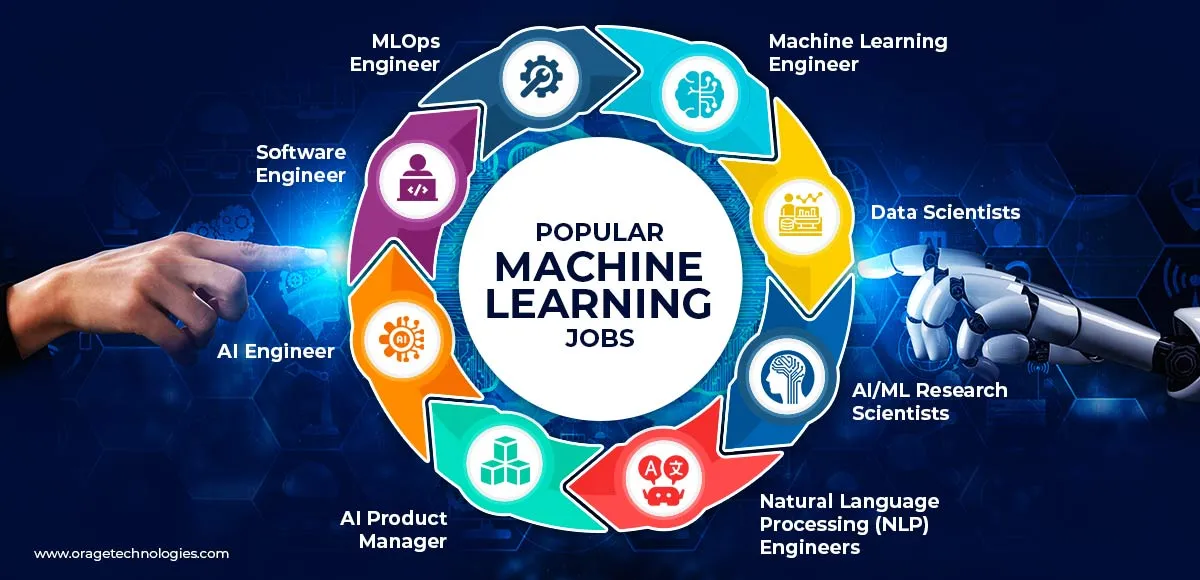
Divya Stuti, with over 5 years of experience in Digital Marketing & Content Writing, has a knack for turning complex Marketing strategies, trends, and jargon...
Artificial intelligence is taking over every sphere of our lives. From smartphones to smart homes, we all are surrounded by technological advancement. The world is moving fast and Artificial Intelligence and Machine Learning are two of its front wheels. And these two are evolving too.
In this blog, we are going to discuss some of the latest advancements in AI technology that will have big impacts.
Facts and Figures:
- Artificial Intelligence (AI) software market revenue is expected to reach 126 billion dollars by 2025 globally. (Source: Statista)
- 37% of organizations have implemented AI and over 270% growth in enterprises employing AI was seen in the last 4 years. (Source: Gartner)
- AI has its role in customer interactions and by 2025, AI will handle 95% of this role. (Source: Servion Global Solutions)
- The global AI software market may grow approx 54% on a yearly basis with over USD $22.6 billion market size. (Source: Statista)
Recent Advancements in AI Technology and Machine Learning
- Deep Learning and Neural Networks
Deep learning is a section of machine learning. It uses multi-layered neural networks to analyze different types of data. These advanced algorithms find patterns that traditional methods might miss and handle huge datasets well. Deep learning powers advancements in image recognition and natural language processing (NLP).
Key Technologies in Deep Learning
Convolutional Neural Networks (CNNs):
- CNNs recognize visual information and are used in image recognition systems.
- They mimic how the human brain processes information by breaking down images into parts and analyzing them layer by layer.
Recurrent Neural Networks (RNNs):
- RNNs understand sequential data, making them perfect for NLP tasks.
- They remember previous inputs, allowing them to use predictive analytics for context-aware text, crucial for speech recognition and language generation.
Applications and Innovations
Image and Facial Recognition:
- Deep learning allows computers to identify objects, faces, and scenes with human-like accuracy.
- Applications include medical imaging diagnostics and surveillance.
Natural Language Processing:
- Deep learning helps create applications that understand, interpret, and generate human speech and language.
- NLP advancements include voice recognition systems, translation services, and conversational AI.
- Reinforcement Learning and Autonomous Systems
Reinforcement learning (RL) helps machines learn to make decisions through trial and error. An agent interacts with its environment, performs actions, and gets feedback as rewards or penalties. Over time, the agent learns to improve its actions to get more rewards, similar to how humans learn from experience.
Applications in Autonomous Systems
- RL is used in self-driving cars and robotics.
- In self-driving cars, RL algorithms use sensory data to make decisions while driving.
- In robotics, RL helps robots learn new tasks, like moving objects or navigating spaces on their own.
Ethical Considerations
- The rise of autonomous AI systems brings ethical concerns.
- Machines making important decisions, especially involving human safety, raise issues of accountability, privacy, and job loss.
- Ensuring these systems make ethical decisions and are free from bias is a major challenge.
- Engineers need to design these systems carefully, balancing their potential benefits with ethical responsibilities.
- Natural Language Processing Advancements
NLP, powered by RNNs, has changed how machines understand and interact with human language. These advancements lead to conversational AI and chatbots, making digital interactions more human-like. Advanced NLP models allow programs to understand, generate, and engage in conversations, helping users, gathering information, and facilitating transactions.
Breaking Language Barriers
- NLP is improving global communication by providing accurate and context-aware translations.
- Sentiment analysis uses NLP to interpret and categorize opinions from text, giving businesses insights into consumer attitudes and feelings.
Voice Recognition Technology
- NLP advancements drive voice recognition technology.
- Virtual assistants like Siri, Alexa, and Google Assistant can understand and respond to voice commands.
- Practical uses include setting reminders and controlling smart home devices, making technology more interactive and accessible.
- Explainable AI and Model Interpretability
Explainable AI (XAI) and model interpretability one of the latest advancements in AI technology. It focuses on making AI decision processes clear and understandable. As AI models, especially deep learning networks, get more complex, they become “black boxes” that are hard to understand. XAI aims to make these processes transparent so people can understand, trust, and manage AI decisions.
Importance in Various Industries
- In autonomous driving, healthcare, and finance, understanding AI decisions is crucial due to significant consequences.
- XAI helps people trust AI decisions by explaining the reasoning behind them, ensuring they are fair, unbiased, and ethical.
Balancing Complexity and Interpretability
- There is a tradeoff between model complexity, accuracy, and interpretability.
- Complex models, like deep neural networks, perform better but are harder to interpret.
- Simpler models, like decision trees, are easier to understand but less powerful.
- Balancing accuracy and interpretability depends on the model’s use, decision importance, and need for transparency.
- Strategies to improve interpretability include designing models that are easier to understand and using tools to explain complex models.
Final Line:
Artificial Intelligence and Machine Learning together are the driving forces of advancement. From the IT world to the Healthcare sector these two technologies have turned the once-unimaginable into reality. Every other day, new AI-driven technologies are popping up and some of the latest advancements in AI technology are listed above.

Divya Stuti, with over 5 years of experience in Digital Marketing & Content Writing, has a knack for turning complex Marketing strategies, trends, and jargon into interesting and easy to digest blog posts. Whether she’s breaking down the SEO, Social Media or decoding campaigns, Divya knows how to make marketing feel exciting and easy to understand. Armed with a sharp eye for strategy and a storyteller’s instinct, she writes with clarity, creativity, and just the right dose of wit.
More Posts

